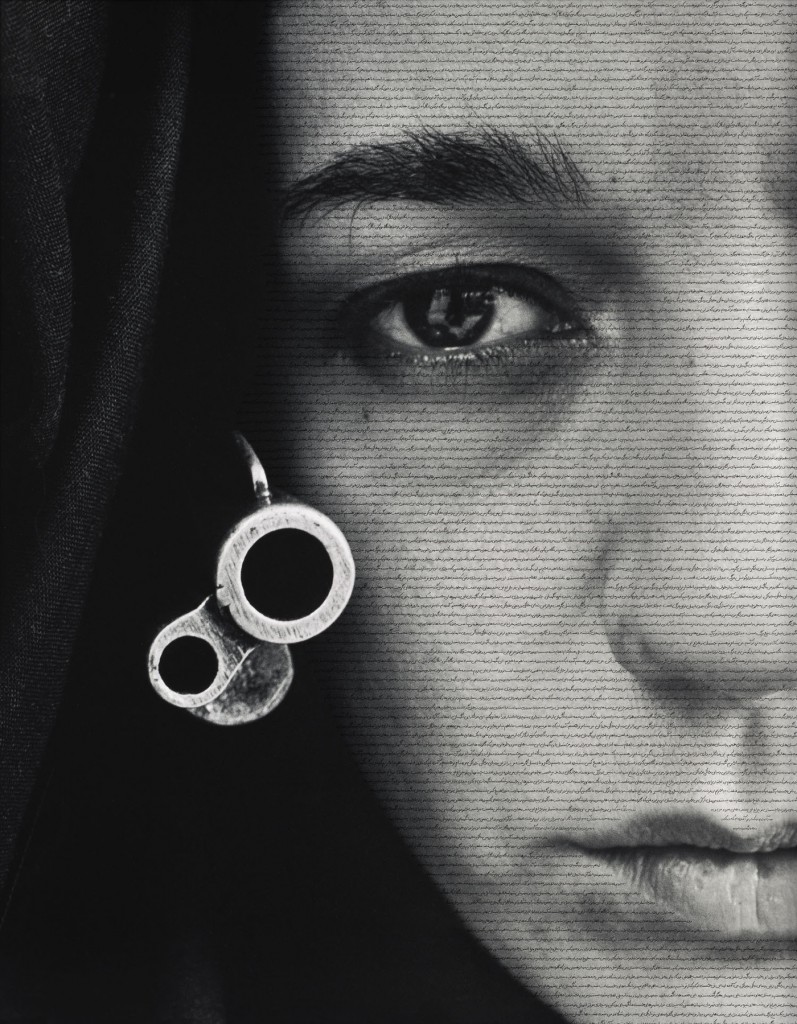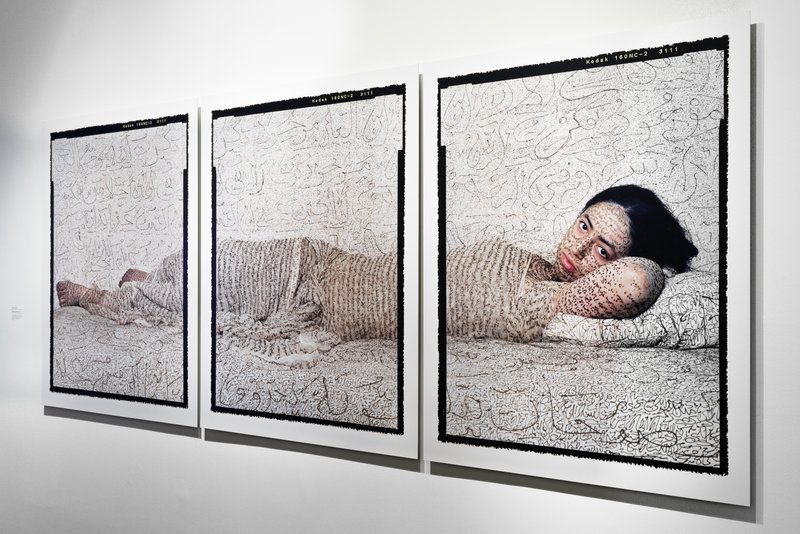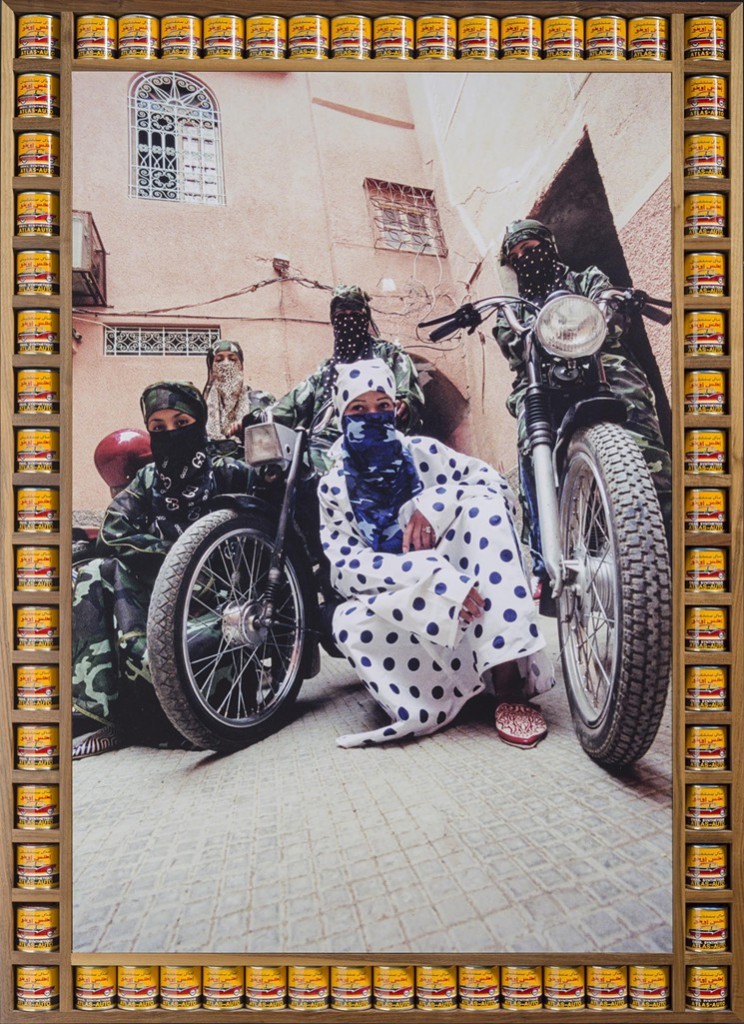The relationship between the West and the Middle East has long been described as mystifying, misunderstood and more so an ideology that can only be infamously described as a clash of civilizations. While some may attempt to normalize the lives of Middle Easterners to the West through mainstream channels of media and literature, others took a more artistic route allowing their work to do what art does best − spark meaningful dialogues and conversations.
The Los Angeles Museum’s Islamic Art Now: Contemporary Art of the Middle East Exhibition, the first major installation of LACMA’s collection of contemporary art in the Middle East, has been called ‘provocative, dramatic and a powerful clash of imagery and cultures.’ As the first of a two-part program, the exhibition features approximately 25 works by artists from Iran and the Arab world. Drawing inspiration from their own cultural traditions, these artists use techniques that incorporate imagery and ideas from earlier periods but with a contemporary twist filled with perplexing nuances and questions.
Viewers will find a very different set of images and portraits that stems beyond the oriental images of dark skinned men surrounded by luxurious places, hookahs and white belly dancers that once dominated the stereotypes of Islamic Art.
Instead, viewers will experience an array of thought provoking images such as Shirin Neshat’s 1996 photograph titled Speechless, a close up of a woman’s face wearing a black headscarf.
 At the first glance it seems like the woman is wearing a large earring. On closer inspection, however, the earring turns out to be the barrel of a gun with her face covered with calligraphy about protection and martyrdom.
At the first glance it seems like the woman is wearing a large earring. On closer inspection, however, the earring turns out to be the barrel of a gun with her face covered with calligraphy about protection and martyrdom.
Moroccan photographer Lalla Essaydi also mixes calligraphy and women in her 2008 work titled Reclining Odalisque, which features an Arab woman reclining comfortably covered with Arabic writing across her body while staring straight at the viewer, prompting several questions: Should the audience focus on the woman or the words on her body? Is she a description of her words or do the words describe her? Curator Linda Komaroff says it’s neither.
“I see it more as: This is who I am. See me for who I am. Read me if you like, but this is me,” Komaroff told NPR.
This theme of provocative yet reflective questions where we examine more than meets the eye permeates through the entire exhibition in a way that challenges perceptions of contemporary art and artists in the Middle East. It is commonly understood that art is never clear-cut, and these artists embrace and push this powerful form of expression through their work to spark much-needed conversations.
Kamaroff seems to agree as she comments on Egyptian-German artist Susan Hefuna’s Woman Behind Mashrabiya and the other women centric pieces
“It’s very mysterious and deliberately so,” she told NPR. “It’s this notion about: Do we really understand? … To me, a lot of these images are a challenge to an American audience to maybe rethink what their perceptions are of women in the Middle East, women in the Islamic world. Maybe they’re not that different from us after all.”
Whether these pieces pose the question of whether or not women in the Middle East are like women in West, one thing is for certain − they challenge and shatter stereotypes of Islamic Art and the Middle East that have so often been clung to and reiterated in recent years.
One may also argue that their artwork stems beyond just creative brilliancy, but emphasizes the importance of reclaiming a new identity for Islamic Art.
In 2012, Glenn Lowry, director of the Museum of Modern Art in New York gave a lecture where he described driving around Abu Dhabi while thinking about how Middle Eastern art history has been “erased over the course of much of the 20th century” or “simply never written,” due to either a lack of interest or prejudices.
“Artistic practice in the Middle East,” Lowry told LA Weekly, has “parameters and a history we are only now beginning to see and understand.”
Shedding light on a new perspective to understanding Islamic Art, this exhibition is an important one the pushes us to read between the lines and understand the narrative being told by the artists rather than the usual one interpreted by the West.
This idea is portrayed Hassan Hajjaj’s photograph Gang of Kesh Part 2 which shows a group of women in hijabs made of patterned fabric posing next to motorcycles.
Describing his piece, Hassan says in an interview that he combines the influences around him including hip-hop and motorcycle culture and blending them with the friendly, familiar feel of brands like Fanta and Nike to introduce viewers to the less-familiar sight of Marrakesh’s bike culture – a true mesh of the East and West.
Nonetheless, these brilliant pieces of art continue to capture the distinctive and exceptional skill of storytelling that allows for the West to rethink Islamic Art in a powerful way. As these artists continue to shed light on a region whose artistic narrative has been lost through decades of socio-political conflict and the notion that Middle Eastern culture and art are somehow stuck in the past.
In a way, Arabic contemporary art like those exhibited in Islamic Art Now bring a more fresh, modern perspective that recaptures the beauty and essence of a people that have long been mischaracterized by the West, giving viewers a chance to become part of that experience and Middle Eastern artists a new way to understand their region’s history.





















It is nt easy to change the view that someone else hv of you. But I think they do it well. We are not scary or scared or old-fashioned or backwards. It is good to show and see different side of ppl from other countries.
These artists do that well.